This article was co-authored by Ashley Mak, DPT. Ashley Mak is a Physical Therapist and the Owner of Ashley Mak Performance and Rehabilitation, his physical therapy business based in Hoboken, New Jersey. He is also the CEO of Hudson River Fitness and an Adjunct Professor at Kean University. With over seven years of physical therapy experience, Ashley specializes in both pain management and maximizing physical performance. He received his BA in Biology from Villanova University in 2010 and his Doctorate in Physical Therapy (DPT) from Thomas Jefferson University in 2012.
wikiHow marks an article as reader-approved once it receives enough positive feedback. This article received 18 testimonials and 80% of readers who voted found it helpful, earning it our reader-approved status.
This article has been viewed 1,648,070 times.
Incorrect forward head posture can lead to chronic pain, numbness in the arms and hands, improper breathing, and even pinched nerves. This is because for every inch your head extends forward, your neck has to support an additional 10 lbs. (4.5 kg) of weight! Many people do not realize that they have poor neck posture, so you will want to test your posture to see if prolonged computer use, television viewing or incorrect sleeping positions have affected how you hold your head. Stretch and strengthen your muscles with specific exercises to reduce tension and other symptoms of poor neck posture.
Steps
Diagnosing Incorrect Posture with the Wall Test
-
1Stand with your back flush against a wall. Align your heels at shoulder width apart, press your buttocks against the wall, and be sure your shoulder blades are touching the wall (this is more important than the tops of your shoulders touching the wall).[1]
- You may need to squeeze your shoulder blades together slightly to get them in a more natural position and align with the wall. This is sometimes called "opening your chest."
- As you get into position, pay attention to your head position. Notice whether or not the back of your head touches the wall. If it does not touch the wall, you have forward head posture, and it is likely that you suffer from weak neck muscles.[2]
-
2Get into correct head posture by touching the back of your head to the wall. Pretend that there is a string going from the base of your neck to the top of your head. Pull that string up from the top creating a longer neck. As the back of your neck gets longer, you chin should tuck in and down somewhat toward the back of your neck. This is correct neck and head posture.
- Make sure you are not simply moving your head backwards and increasing the curve of the neck. This is also improper posture. Focus on creating length in the back of the neck.
Advertisement -
3Stand this way for 1 minute. This is your correct head posture, and you want your body to remember it. Return to this position frequently to review how your posture is changing.
Releasing Tight Muscles with Stretches
-
1Relieve your occipital muscles with a massage ball. The small muscles at the base of your skull right above where your neck meets your head are your occipital muscles. Tightness here is responsible for a lot of pain and tension, and sometimes headaches and dizziness. The best way to relieve these muscles is with ball massage. Use a tennis ball, racquetball, small foam roller, or anything with a similar shape. Lie flat on your back face up and place the ball under your neck right at the base of your skull on either side of your spine.[3]
- Turn your head side to side to roll over different areas. Do this for about 5 minutes, and be sure to massage both sides.
-
2Regularly stretch the back of your neck. Stand up straight. Tilt your chin to your chest. Interlace your fingers and place them behind your head.[4] Do NOT pull downward on your head, but allow the weight of your arms to apply gentle downward pressure on your head and stretch the back of your neck.
- Hold for 30 seconds. Repeat 3 times or more.
-
3Stretch the sides of your neck. Stand or sit up straight. Keeping your nose facing straight ahead, bring your right ear to your right shoulder. Rest your right hand on the side of your head and allow the weight of your arm to gently pull, stretching the left side of your neck. Again, do not actively pull on your head – just let the weight of your arm apply gentle traction.
- If your shoulders slump forward, bend your left elbow and place your left arm behind your back with your palm facing outward (when your head is tilting to the right).
- Do this for 30 seconds on each side, repeating 3 times.
-
4Release the SCM muscle at the front of your neck. Your sternocleidomastoid (SCM) muscle is that strong, thin muscle that stretches from right behind your ear down to about the middle of your throat (it connects to the end of your collarbone close to your midline), creating the little V-shaped divot at the front of your throat. You should be able to feel this strong band of muscle. Find it and gently massage it by pinching and rolling it lightly between your fingers.[5] Go up and down the length of the muscle.
- Don’t push too deep into your neck where you might hit other tender places. The massaging motion is like gently pulling or lifting the SCM away from other structures in your neck.
- It might help you find and relax the muscle by turning your head in the opposite direction, i.e., turn your head to the left with your nose staying straight ahead to feel your right SCM.
-
5Stretch your chest muscles. Walk into an open doorway. Place your right arm against the right side of the door with your palm facing the door. Bend your elbow so that it is in a 90° angle, with your forearm flush with the side of the door. Take a small step forward with your right foot. Keep your forearm touching the door. You should feel a stretch in your pectoral muscles at the front of your chest near your armpit.[6]
- Hold the stretch for 30 seconds and repeat on the opposite side.
-
6Speak to a professional body-worker for advice. Chiropractors and massage therapists are experts at understanding how posture problems cause pain, and how to fix them. See a massage therapist or have a chiropractic session and ask about stretches and exercises you can do at home.
Improving Your Posture with Daily Habits
-
1Set up your computer ergonomically. Raise your monitor so that the top third of your screen is at eye-level. Measure the distance from your monitor to your eyes to ensure it is 18 to 24 inches (45.7 to 61.0 cm) away from your face. You may need to prop your computer up on some books, use a taller or shorter desk, or adjust the height of your chair. Use a tape measure to determine how far your face is from your computer screen, and adjust where you place your chair accordingly.
-
2Avoid carrying heavy bags or purses. Try to keep your shoulder bag or purse to a small size and minimal weight. If you do have a lot to carry, use a backpack rather than something with only one strap, and get a backpack that’s designed for even weight distribution. Avoid carrying bags on the same shoulder all the time, because this will lead to improper alignment. Switch shoulders regularly.
-
3Stretch every 30 minutes that you’re in front of a desk, computer, or TV. If you work at a desk or work in front of a computer, get up and move around frequently to decrease the pressure on your neck and back. A brief pause to walk around every half hour can be beneficial. Try to take 30 seconds or a minute to do neck stretches every 2 hours. The same goes for sitting on the couch and watching television.
-
4Buy a supportive neck pillow. If you often wake up with a sore neck, you probably have poor sleep posture. Supportive neck pillows allow your head to fall into the middle of the pillow, supporting your neck with a firm, curved section at the bottom of the pillow.
-
5Stand with good posture. While walking, keep your shoulders back and aligned. Squeeze your core muscles (your abdominal muscles) to keep your body straighter. Bend your knees a little bit to take some pressure off of your hips. Invest in shoes with good arch support – it’s amazing how much this can help your posture.[7]
-
6Walk with good form. Keep your chin parallel to the floor when you’re walking, and walk with a heel-to-toe motion. Don’t stare at your feet or arch your back; keep your butt and belly lined up with the rest of your body.[8]
-
7Try a posture brace. Using a posture brace has been shown to help improve posture by forcing your shoulders back and keep your head aligned with your vertebrae. Using a posture brace daily can not only help maintain a proper posture but in fact improve your shoulder positioning.
Strengthening Your Muscles with Exercises
-
1Do chin retractions, otherwise known as nose nods. Lie on your back face up, bend your knees, and put your feet flat on the floor so that you do not strain your lower back. Keep your nose perpendicular (pointing straight up) to the ceiling. Nod your head slowly forward without moving your neck. Envision that you are drawing a small arc with the tip of your nose. Keep the movement very slow.[9]
- Slowly return your nose to its vertical position. Repeat 10 times. In a few days, increase your repetitions to 20 times. The next week, begin doing 2 to 3 sets of nose nods per day. Once you get used to the motion, you can do them standing up against a wall or standing up away from the wall.
-
2Practice shoulder blade squeezes. Sit up straight in a chair. Your neck should be long, and your knees bent at a 90° angle with your feet on the floor. Squeeze your shoulder blades together, as though you are trying to get them to touch. Hold this for 3 seconds, like you’re trying to hold a tennis ball between your shoulder blades. Slowly release your hold back to a relaxed position.
- Intentionally drop your shoulders if tension has caused them to creep closer to your ears. Let your arms hang to your sides.
- Repeat this exercise 10 times, moving in a controlled manner. Increase to holding for 10 seconds and then to doing 2 to 3 sets per day as you get stronger.
- Chest tightness and weak back muscles are very common in people who spend a lot of time at a desk or in front of a computer. It tends to cause your shoulder to slump forward. This exercise helps to undo that poor posture.
-
3Improve your range of motion with advanced chin retractions. Sit in a chair or stand up straight. Practice your chin retractions/nose nods a few times. Do a chin retraction, letting your nose sweep downward slightly. Once it is retracted, keep your chin at the same distance to your neck, but move the top of your head backward.
- Stay there for a few seconds and move slowly, returning your head to an upright position. Then, move out of the chin retraction. Do this 10 times, working up to increased repetitions and sets.
- During this exercise, remember that you are not trying to increase the arc of your neck. You are trying to pivot your head backward in a natural and correct manner. People who have had forward head posture for an extended period of time may find this very difficult to do in the beginning.
Expert Q&A
-
QuestionHow do you fix bad posture?
 Ashley Mak, DPTAshley Mak is a Physical Therapist and the Owner of Ashley Mak Performance and Rehabilitation, his physical therapy business based in Hoboken, New Jersey. He is also the CEO of Hudson River Fitness and an Adjunct Professor at Kean University. With over seven years of physical therapy experience, Ashley specializes in both pain management and maximizing physical performance. He received his BA in Biology from Villanova University in 2010 and his Doctorate in Physical Therapy (DPT) from Thomas Jefferson University in 2012.
Ashley Mak, DPTAshley Mak is a Physical Therapist and the Owner of Ashley Mak Performance and Rehabilitation, his physical therapy business based in Hoboken, New Jersey. He is also the CEO of Hudson River Fitness and an Adjunct Professor at Kean University. With over seven years of physical therapy experience, Ashley specializes in both pain management and maximizing physical performance. He received his BA in Biology from Villanova University in 2010 and his Doctorate in Physical Therapy (DPT) from Thomas Jefferson University in 2012.
Physical Therapist There's a common misconception that there's such a thing as "perfect" posture. Realistically, so long as you're comfortable and you aren't feeling any pain or soreness, your posture is probably fine. Just change your sitting or standing position regularly to avoid getting sore. Also, stand up regularly and walk around.
There's a common misconception that there's such a thing as "perfect" posture. Realistically, so long as you're comfortable and you aren't feeling any pain or soreness, your posture is probably fine. Just change your sitting or standing position regularly to avoid getting sore. Also, stand up regularly and walk around. -
QuestionHow do I keep the correct forward head posture?
 Michele DolanMichele Dolan is a BCRPA certified Personal Trainer in British Columbia. She has been a personal trainer and fitness instructor since 2002.
Michele DolanMichele Dolan is a BCRPA certified Personal Trainer in British Columbia. She has been a personal trainer and fitness instructor since 2002.
Certified Fitness Trainer It takes practice and perseverance to change your head position. Think about where you are looking. If you look down, you will drop your head. Keep your eyes looking straight ahead. As you are walking, notice where you are looking. If you look down, your head will be dropped too. It may require a lifetime of self reminders. However, the alternative is a lifetime of pain and other spinal problems, so in that context, it is a worthwhile endeavor.
It takes practice and perseverance to change your head position. Think about where you are looking. If you look down, you will drop your head. Keep your eyes looking straight ahead. As you are walking, notice where you are looking. If you look down, your head will be dropped too. It may require a lifetime of self reminders. However, the alternative is a lifetime of pain and other spinal problems, so in that context, it is a worthwhile endeavor. -
QuestionApproximately how long does it take to fix forward head posture?
 Michele DolanMichele Dolan is a BCRPA certified Personal Trainer in British Columbia. She has been a personal trainer and fitness instructor since 2002.
Michele DolanMichele Dolan is a BCRPA certified Personal Trainer in British Columbia. She has been a personal trainer and fitness instructor since 2002.
Certified Fitness Trainer The time it takes to correct head forward posture depends on your age and how long you have been holding your head in that manner. With vigilance, and no skeletal or permanent problems in the neck, the musculature can change in a few months. However, remember that your spine will need time to adjust to the changes in your head position and you may feel very fatigued. Stick with your plan and be patient. The alternative is a lifetime of progressively more advanced neck and spine problems. Consider all your efforts an investment in your future health and good posture.
The time it takes to correct head forward posture depends on your age and how long you have been holding your head in that manner. With vigilance, and no skeletal or permanent problems in the neck, the musculature can change in a few months. However, remember that your spine will need time to adjust to the changes in your head position and you may feel very fatigued. Stick with your plan and be patient. The alternative is a lifetime of progressively more advanced neck and spine problems. Consider all your efforts an investment in your future health and good posture.
Things You'll Need
- Ergonomic computer set up
- Supportive neck pillow
References
- ↑ https://posturedirect.com/forward-head-posture-correction/
- ↑ https://posturedirect.com/forward-head-posture-correction/
- ↑ https://posturedirect.com/forward-head-posture-correction/
- ↑ https://posturedirect.com/forward-head-posture-correction/
- ↑ https://posturedirect.com/forward-head-posture-correction/
- ↑ https://observer.com/2017/05/how-to-fix-bad-posture-hunched-back-forward-neck/
- ↑ https://greatist.com/health/ultimate-guide-good-posture
- ↑ https://greatist.com/health/ultimate-guide-good-posture
- ↑ https://posturedirect.com/forward-head-posture-correction/
About This Article
You can correct forward head posture by making small changes during your day. If you work at a computer, set it up so the top third of the screen is at eye level and the monitor is 18-24 inches away from your face. In addition, take 30 seconds to stretch for every 30 minutes you spend in front of your computer or TV. When you’re walking, keep your shoulders back, squeeze your core muscles, and bend your knees to take some of the pressure off your hips. For tips on correcting your head posture with exercise and stretches, read on!



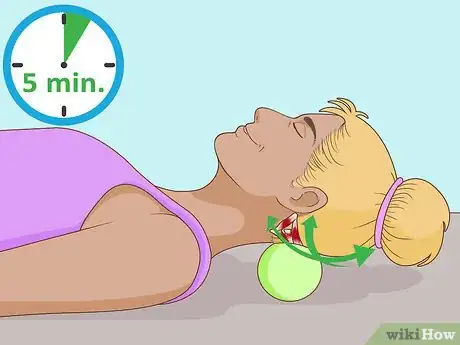



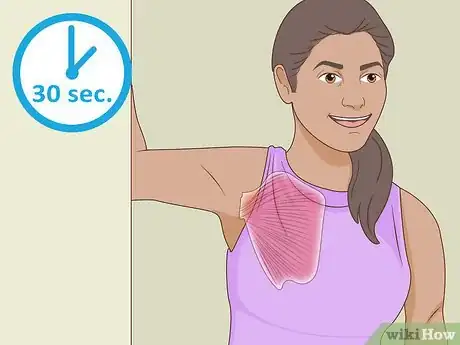
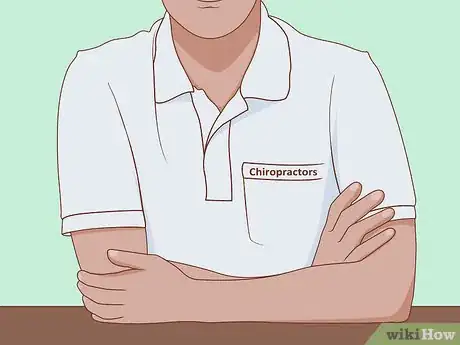


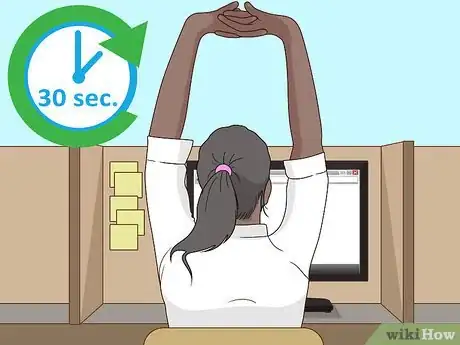


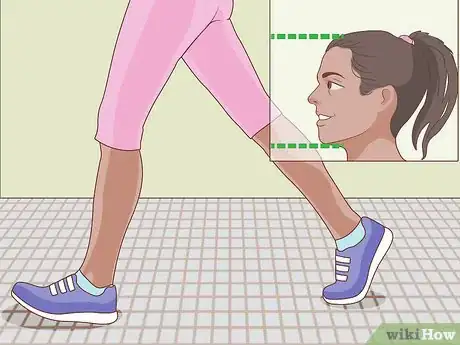

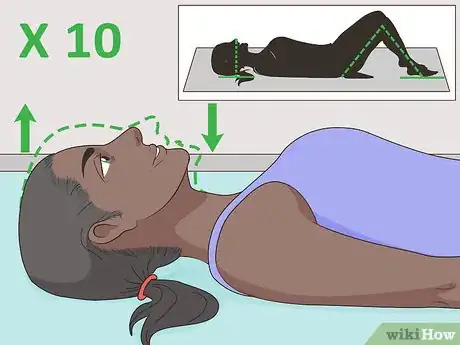


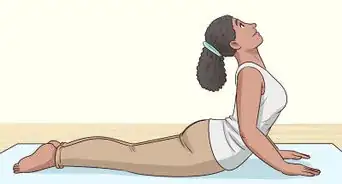


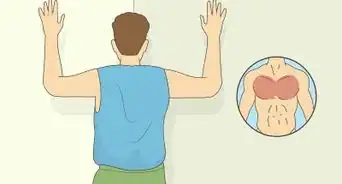
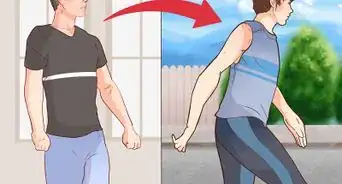
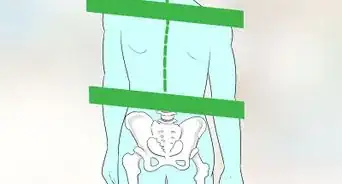

















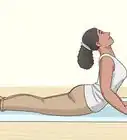


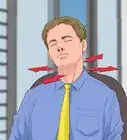



































Medical Disclaimer
The content of this article is not intended to be a substitute for professional medical advice, examination, diagnosis, or treatment. You should always contact your doctor or other qualified healthcare professional before starting, changing, or stopping any kind of health treatment.
Read More...